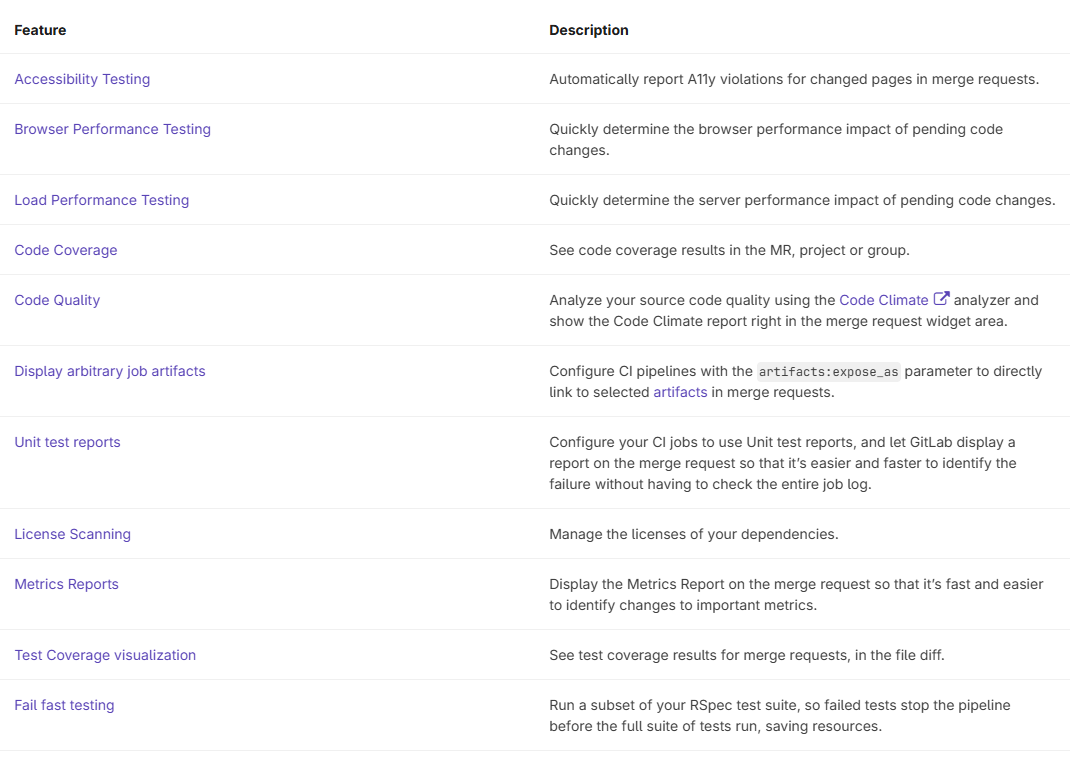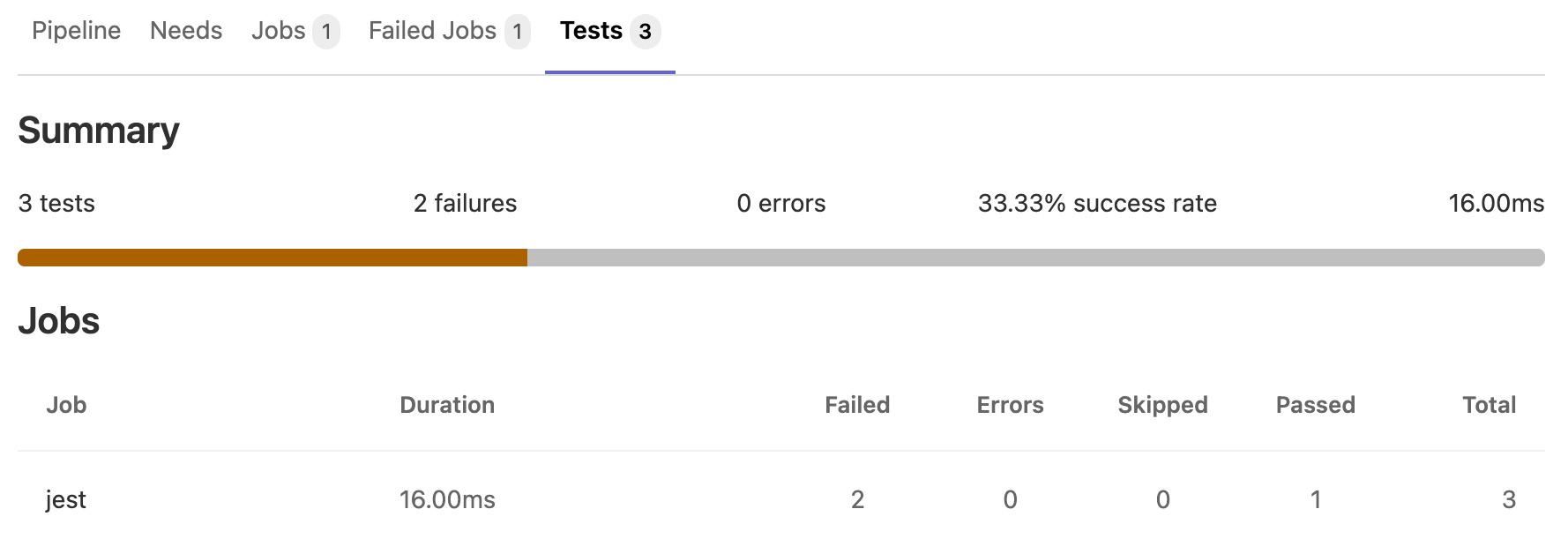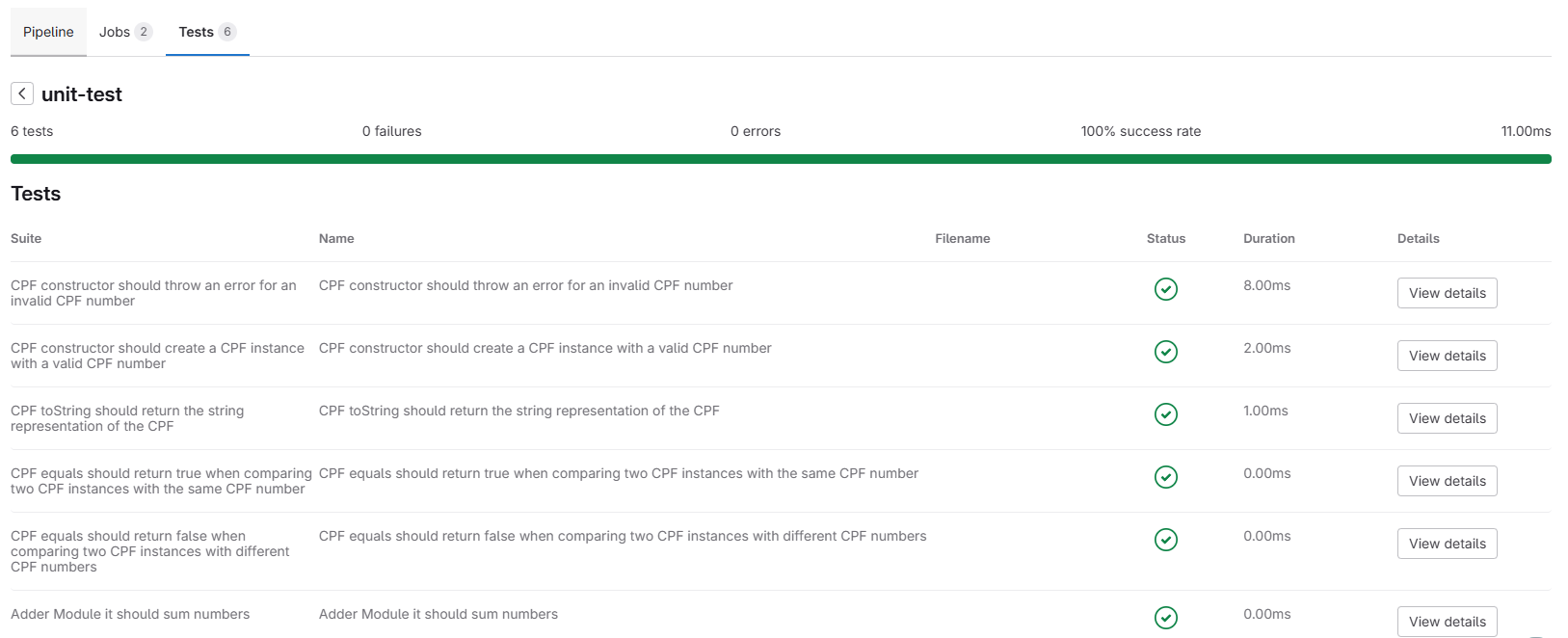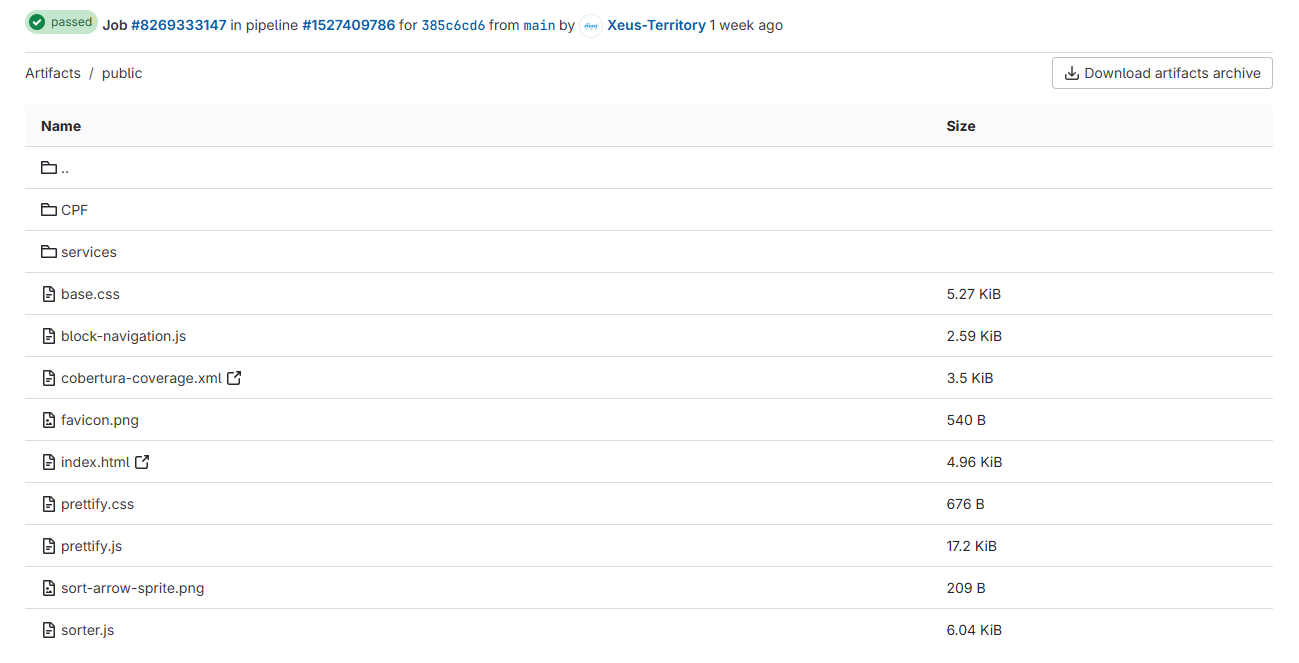Quote
Hi @all, how is your week? I feel awesome with couple things I learn from a bit podcast, movie and some story when I try talk with my friend. However, I am not ever forgot to write a something for this weekend, so we will learn about integrating automation test with GitLab and see the supportive of GitLab for this stuff. Let’s digest !!
Why we need automation test ?

The story stands behind the automation test that will be a lot and when we need separate into some categories, you will figure out kind general things in those scenarios, such as
- Increase accuracy
- Increase speed with lest effort and long-term available (24/7)
- Consistency
- Cost savings
- Enhance test coverage
- Test Reusability
- Continuous testing
As you can see, with integrating automation test into progress and life circle of product, you will receive more thing than you lost. But in the chaos and explosion of technology, automation test submit the crucial role for industry and the result responses truly incredible, lot of bug will take care and QA need to focus in special case not at all for common because automation usually better than manual, honestly.
You can find and read couple articles to understand about automation because I will not focus into theory at all, but I think you figure out something afterward
- QAMadness - Your Guide to Automated Integration Testing
- Codilime - The importance and benefits of unit testing
- Katalon - What is Automation Testing? Ultimate Guide & Best Practices
- Katalon - 9 Core Benefits of Automation Testing
To approach automation test, you need to prepare some couple tools and platform, and GitLab is one place to help you set up the process. No cap 😄
Framework and GitLab CI for automation testing?
I need to say, community already serve us multiple ways to improve the product again, again and again with and I appreciate with effort of them. Because when you try to google, there are a lot of framework you faced that help you create E2E testing for your project, such as
- Katalon - Top 10 Best End-to-End Testing Tools and Frameworks
- Leapwork - The Top 20 Test Automation Tools of 2024
- JavaScript unit testing frameworks in 2024: A comparison
When I try to dig into this field, I figure out you need to pick up only one for your, and I find jest - javascript framework - ease to use and pretty cool for integrating that into automation test, so why not?
![]()
The first reason why I choose Jest, because Jest already enough things to create completely things to integrating test inside working pipelines with awesome features, such as
- Zero Config
- Snapshots
- Isolated
- Great API
Jest is supporting for multiple Javascript things like Typescipt, Node, React, Angular and Vue. One more thing makes Jest become more worthy of trust because big tech companies believe Jest for automation testing parts of things inside product pipelines, like Facebook, X (Twitter), Spotify, …
You can find more information about Jest with couple pages
So pick up a tools, and now you need to help developers bring that into automation with no more effort. Test cases will prepared by developers and your duty as DevOps, you need to change into pipelines with 100% automatic.
You can hand-on with couple platform, such as GitHub Actions, AWS Code Pipelines, GitLab CI, Circle CI, Travis CI, … It’s actually a lot I think, you can try to learn from these articles
- Bitovi - Automate Jest Tests in Your DevOps Pipeline with GitHub Actions
- Chucks’s Academy - Test Automation with CI/CD using Jest
- Caylent - Automated Testing with Jest on AWS
- GitLab - How to automate testing for a React application with GitLab
But why I prefer GitLab CI because ecosystem of this platform creates insane place for adopting any process into GitOps mindset. IYKYK, GitLab keeps both responsibilities, repository and devsecops platforms, and when you try focus on GitLab you can see a lot of features that provides for developers truly useful and totally free.
You can come and read about some topics in GitLab Documentation - Test with GitLab CI/CD and generate reports in merge requests

As you can see, GitLab provides a lot of types to test, and you can try one of these inside Platform, and I will focus with you to use Jest in running Unit-Test (UT) for project and see the result fulfillment
One more thing to make GitLab CI becomes the best place to operate your pipeline because the incredible report responses after automation testing passthrough, with provide a lot of things to help you direct vision of efficiency of testing with product.
Unit Test report with support artifacts:reports:junit type and support for multiple language in public exporting report about unit-test

BTW, You can use one of two visualization to export report into GitLab to see what coverage of testing process as HTML Page, Coverage score, and a lots
Success
Throughput anything else, I think that make GitLab CI become potential place when you try to store your source code, adapt the pipelines process, retrieve the high quality report, and moreover. Now we will bump to practical session to know more about automation test and GitLab CI
Practical Session
Question
In this practical session, we will focus into how to leverage GitLab CI and Jest to create fully automation testing process for Typescript
Before starting, you can check it out couple articles and repository to help you figure how can implement
- Medium - GitLab CI/CD for Automated Testing
- Testmo - GitLab CI/CD Test Automation Pipeline & Reporting
- Viblo - Automation Test với Docker và Gitlab CI
- Evolvingweb - A Comprehensive Guide to React Native, Jest and GitLab CI/CD
Prepare and Introduce Module
Actually, I don’t remember how the project of example particularly, but sorry to not attach you in here, shout out to him/her to help me retrieve useful example for the experiment
You can try to access to my repository to get one example product for yourself at Automation Test with Jest. This organization will include two repository, including
- jest-unit-test : Implement the TestCase, Code and GitLab Pipelines
- ut-gitlab-template: Store the GitLab Pipelines template for automation testing
BTW you need to focus in first one, and I will try to help you implement directly run unit-test for specific inside .gitlab-ci.yml file
When you try to access and clone the source code, you can see with jest that have some specific file, for example: jest.config.js
module.exports = {
transform: {
'^.+\\.tsx?$': 'ts-jest',
},
testRegex: '((\\.|/)(test|spec))\\.tsx?$',
moduleFileExtensions: ['ts', 'tsx', 'js', 'jsx', 'json', 'node'],
coverageReporters: ["html", "text", "text-summary", "cobertura"]
}To empower with more configuration of Jest, you need to use jest.config.js to ramp up this and it will be discovered automatically when you run test
You can find some options to define inside this configuration at Configuring Jest - Options, and in our circumstance, Jest file will focus into
- Testing TypeScript with
ts-jestoption - Regex to detect test definition for TypeScript
- Set array of file extensions your module use
- Set reporter to use
coverturacoverage report with HTML export after running test
You can take a look in example, I will focus into two test-case, first for math.ts and second for cpf.ts with *.test.ts definition inside src PATH
Next, you need to catch up with package.json to see what module dependency. When you work with jest and try to export unit-test, you need to add two package module into this file, including
If your package.json is not exist, you can try to add with command to install dependencies for at all
npm add <package>One more things, you need to define more inside package.json about how your module actual work. In my circumstance, I define test command to use resultProcessor with Junit and expose coverage with configuration inside jest.config.js. If you want to do more with command, I think you should explore with Jest CLI Documentation
Bump in the GitLab CI pipelines
Now, The source code already prepare, you need to reach to .gitlab-ci.yml file and define what you need into this workflow.
stages:
- unit-test
- unit-test-report
default:
image: node:18.20.4
# Run unit test with integrate coverage, export coverage number and generate report
unit-test:
stage: unit-test
script:
- npm install
- npm run test
# To specify a list of files and directories to cache between jobs.
# Documentation: https://docs.gitlab.com/ee/ci/yaml/#cache
cache:
paths:
- coverage/
artifacts:
untracked: false
when: on_success
access: all
expire_in: "30 days"
reports:
# Upload junit report to exporting test result in pipeline
# Documentation: https://docs.gitlab.com/ee/ci/yaml/artifacts_reports.html#artifactsreportsjunit
junit:
- junit.xml
# Upload coverage report to web use `cobertura`
# Documentation: https://docs.gitlab.com/ee/ci/testing/test_coverage_visualization/cobertura.html
coverage_report:
path: "coverage/cobertura-coverage.xml"
coverage_format: cobertura
# Upload coverage report whole folder generate to prepare access via browser
paths:
- "coverage/**"
# To help you know last result (coverage) of unit-test
coverage: '/All files[^\|]*\|[^\|]*\s+([\d\.]+)/'
# Upload report to artifact, use it as website to see detail UT process
ut-report:
stage: unit-test-report
# Retrieve the artifact from successful in the previous job
dependencies:
- unit-test
script:
- mkdir -p .public
- cp -r coverage/* .public
- mv .public public
artifacts:
untracked: false
when: on_success
access: all
expire_in: "30 days"
paths:
- publicAs you can see, we will include two step, run unit-test and expose report with ut-report.
With unit-test, we will run install to setup node_modules to adapt libs and packages for source code, and after that your run test command with defining in package.json to run and export report
Important part in unit-test step, you will upload artifact with including whole report, coverage about test process, and coverage result with regex, you can get another type at Test coverage examples
junit⇒junit.xmlcoverage⇒coverage/cobertura-coverage.xmlHTML⇒coverage/**
After that you receive the artifact next job with dependencies: unit-test, and expose webpage with GitLabCI because with public folder that GitLab permits to use as webpage through GitLab Page. Explore more at GitLab Pages public folder
Now you can run the pipeline, create a new commit and push that into main branch
Result of automation test in GitLab CI
When you push your commit into branch, GitLab will auto trigger your pipeline, you can follow inside Build >> Pipelines

Next, you need to view detail with pipeline, you can try click with Status button to see detail

When you try to change into Jobs tab, you will see the coverage value after running unit-test job which expose from information inside job logs
Next you change into Tests tab, you will see test total information of your test process

If you want to view detail each test cases, you can try to click to name of jobs, e.g unit-test

You think how to access HTML as GitLab Page, you can easily to access into artifact inside unit-test-report job, follow these steps unit-test-report >> Browser (Artifact) >> Public >> index.html


Success
You can access GitLab Page, and see your coverage report inside that with detail report. I don’t actual know about meaning of these one but it’s seem directly report and you debug, figure out the error easier and less effort
Conclusion

Success
That @all for this week, I hope you find well with this article and prepare enough for your automation testing integration progress. I think
jestthat truly useful and power framework to testing with Javascript and framework, and with GitLab, This platform is superb and huge to deep dive and you will always surprise with this one, 100% honestly. However, You have chance to absorb anything else and I think write couple thing for automation testing is one of these process
Quote
This blog is enough to read but not long as well, BTW I enjoy a lot to write this one. This weekend session head to end soon, so stay safe, learning new thing and I will back next weekend with Kubewekend, I think 😄. Bye Bye